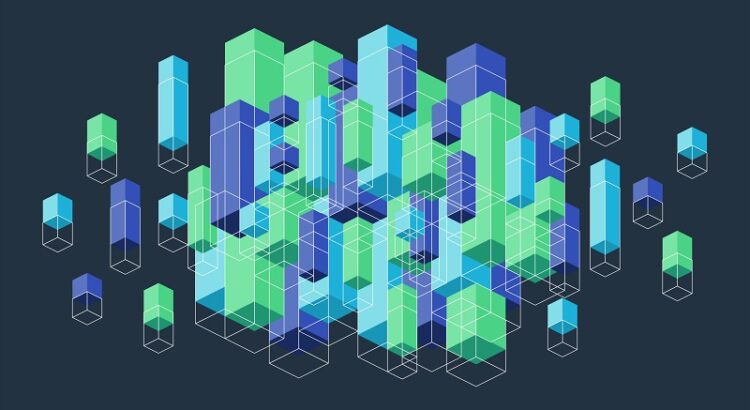Mumbai, India’s thriving financial center, is a city of extreme contrasts. Although it has a great deal of riches and economic potential, it also faces serious socioeconomic difficulties. The challenges encountered by at-risk families—those who are impoverished, without access to necessities, or susceptible to other socioeconomic risks—are among the most urgent problems. These families deal with issues including poor healthcare, inadequate education, unemployment, and vulnerability to crime; they frequently live in slums or informal settlements.
In this situation, data analytics shows itself as a potent instrument that may enhance the lives of Mumbai’s at-risk families and revolutionize the provision of social services. Policymakers, non-governmental organizations, and community organizations may create focused interventions, allocate resources optimally, and monitor the results of their endeavors by utilizing data-driven insights. In order to solve the issues at-risk families in Mumbai confront, this essay examines how data analytics might be used to provide more practical and long-lasting solutions.
The Difficulties At-Risk Families Face
Prior to discussing the ways in which data analytics might be helpful, it is important to comprehend the complex issues that Mumbai’s at-risk families face:
1. Poverty and Joblessness: Mumbai has a large number of families living in poverty and no access to long-term jobs. In many slum regions, informal occupations are the norm, usually low-paying and unstable.
2. Sanitation and Housing: A sizeable section of Mumbai’s population is housed in impoverished housing, unsanitary conditions, and restricted access to clean water in slums or informal settlements.
3. Healthcare Access: Families that are at risk frequently do not have easy access to healthcare services, which puts them at risk for illness and results in poor health and high infant mortality rates.
4. Information: The necessity to support their families, lack of access to high-quality education, or financial strains cause many children from at-risk households to drop out of school.
5. Crime and Safety: Families who are already at risk are disproportionately affected by high crime rates in some parts of Mumbai, which feeds the cycle of poverty and insecurity.
6. Gender Inequality: Women and girls in these households frequently have extra difficulties, such as exposure to gender-based abuse and restricted access to healthcare, work, and educational opportunities.
The Use of Data Analytics to Meet These Difficulties
Large data sets are gathered, processed, and analyzed in data analytics in order to find patterns, trends, and useful insights. Data analytics may be used to identify groups that are at-risk, forecast future dangers, and create focused responses when applied to social concerns. The lives of Mumbai’s at-risk families can be improved in the following ways via data analytics:
1. Determining and Charting Families at Risk
Spatial Intelligence: Authorities can map the distribution of at-risk households in Mumbai by using geospatial data. This can assist in identifying high-risk locations that are primarily affected by poverty, unemployment, crime, or health problems. For instance, comprehensive maps emphasizing the most vulnerable communities may be made utilizing data on income levels, housing conditions, and service accessibility.
Analytical Prediction: Predictive models that identify families at risk of poverty or other socioeconomic difficulties can be developed using data analytics. These models may identify which families are most likely to require intervention by evaluating variables including income, employment status, family size, and health indicators. This enables preventive approaches.
Data Analyst course can help acquire the most accurate data regarding the at-risk families. Data Analyst specialize in providing valuable insights for the correct data set for any sort of project.
2. Specific Interventions and the Distribution of Resources
Maximizing Social Assistance: By pinpointing the unique requirements of various communities, data analytics may aid in the optimization of he provision of social services. Authorities can, for example, identify regions with high rates of chronic illness or hunger by evaluating healthcare data, and then distribute resources appropriately—for example, by establishing mobile health clinics or nutrition programs.
Education Projects: Children who are at danger of dropping out of school can be identified in regions by using data analytics to examine school attendance, educational outcomes, and socioeconomic characteristics. Targeted interventions to keep kids in school, such after-school tutoring programs, scholarship programs, or community-based educational efforts, can be informed by this data.
Programs for Employment: Targeted job training programs may be created for at-risk families by analyzing data on employment trends and skills shortages. Analytics, for instance, can connect training programs for underemployed or jobless people in at-risk neighborhoods with companies where labor is in high demand.
3. Keeping an Eye on and Assessing Impact
Monitoring Program Effectiveness: Data analytics makes it possible to continuously monitor and assess social initiatives. Authorities may evaluate the success of their initiatives and make necessary data-driven modifications by gathering data on key performance indicators (KPIs), such as the number of families lifted out of poverty or the decline in school dropout rates.
Up-to-Date Dashboards: By putting in place real-time dashboards that compile information from several sources (such as work, education, and health care), policymakers can keep an eye on the well-being of families who are at risk as well as the results of current programs. These dashboards may offer a thorough overview of the situation and point out areas that require further work.
Reporting Systems: The establishment of feedback loops, in which recipients of social programs offer feedback on the quality and applicability of the services they get, can be facilitated by data analytics. By analyzing this input, interventions may be better designed and implemented to ensure that they truly fulfill the needs of families that are at risk.
4. Empowerment and Community Engagement
Awareness Campaigns Driven by Data: Targeted awareness campaign design can be informed by data analysis on health, education, and social behaviors. Campaigns to boost childhood immunization rates in at-risk groups, for instance, might be guided by information on vaccination rates in particular locations.
Collaborative Data Gathering: Incorporating community members into data gathering initiatives can enable them to actively participate in recognizing and resolving their own issues. Community-driven projects can be guided by the analysis of data collected on local concerns through the use of mobile applications or questionnaires.
Building Capacity: Data analytics may be used to find knowledge and skill gaps in leaders and community groups. Training programs that are specifically designed to improve their ability to use data in advocacy and service delivery may be created, which will ultimately result in community-based interventions that are more successful.
5. Advocacy and Policy Development
Informed Policy Making: Information gleaned from data can help shape the creation of laws meant to better the lot of families who are considered to be at risk. For instance, information on population density and housing conditions may help direct plans for redeveloping slums, ensuring that they specifically suit the requirements of the impacted people.
Systemic Change Advocacy: Data analytics may be used by NGOs and advocacy groups to create evidence-based arguments for systemic change. These groups are able to push for legislative changes that deal with the underlying causes of poverty, inequality, and vulnerability by providing information on the socioeconomic circumstances of families that are vulnerable.
Difficulties:
Although data analytics has enormous potential to improve the lives of Mumbai’s at-risk families, a number of issues need to be resolved before it can be successfully implemented:
1. Quality and Availability of Data: The quality and accessibility of the data are prerequisites for the efficacy of data analytics. Data on populations that are at risk are frequently lacking, out-of-date, or inconsistent. Accurate analysis depends on ensuring trustworthy data gathering and upholding excellent data quality.
2. Concerns about Ethics and Privacy: Data protection rules and strong ethical norms should govern the gathering and use of data, particularly sensitive personal information. Keeping people’s data safe and private is essential to fostering trust and avoiding abuse.
3. Infrastructure Technology: Adequate hardware, software, and human resources are necessary for the implementation of data analytics solutions. Resource limitations frequently prevent NGOs and government organizations from utilizing data analytics to the fullest extent possible.
4. Cooperation and Arrangement: Cooperation between different stakeholders, such as government agencies, non-governmental organizations, community groups, and the commercial sector, is frequently necessary for the effective application of data analytics. Although coordinating these initiatives might be difficult, doing so is necessary to produce thorough and significant answers.
5. Sustainability of Interventions: Sustainability needs to be considered in the design of data-driven interventions. This involves making certain that initiatives have the capacity to bring about long-lasting change in addition to being successful in the near term. Strategies must be continuously evaluated and adjusted in order to remain effective and relevant.
Conclusion:
The use of data analytics can significantly improve the lives of Mumbai’s at-risk families. Data analytics may assist in addressing the intricate and interrelated problems these families confront by enabling targeted interventions, improving resource allocation, and offering a strong foundation for monitoring and assessment.
Collaboration between public and commercial sector companies, non-governmental organizations, and community groups is necessary for the effective execution of data-driven plans. Mumbai may use data analytics to build a more just and inclusive city where all families may prosper by making investments in data infrastructure, encouraging moral data practices, and encouraging community involvement.
The use of data analytics in social services will be essential to making sure that no one is left behind as Mumbai grows and changes. Data-driven projects, by concentrating on the most vulnerable segments of society, may help create a more resilient and prosperous future for the city and its residents.
Take Charge of Your Future Today! Want to break into the high-demand field of data analytics? Exclr Solutions offers a comprehensive data analytics course in Mumbai tailored to equip you with the skills to analyze, interpret, and visualize data like a pro. Sign up today and get exclusive access to expert mentorship, career support, and practical projects. Your data analytics journey starts here—secure your spot now!
Name: ExcelR- Data Science, Data Analytics, Business Analytics Course Training Mumbai
Address: 304, 3rd Floor, Pratibha Building. Three Petrol pump, Lal Bahadur Shastri Rd, opposite Manas Tower, Pakhdi, Thane West, Thane, Maharashtra 400602
Phone Number: 09108238354





